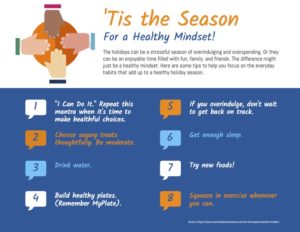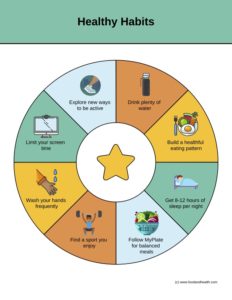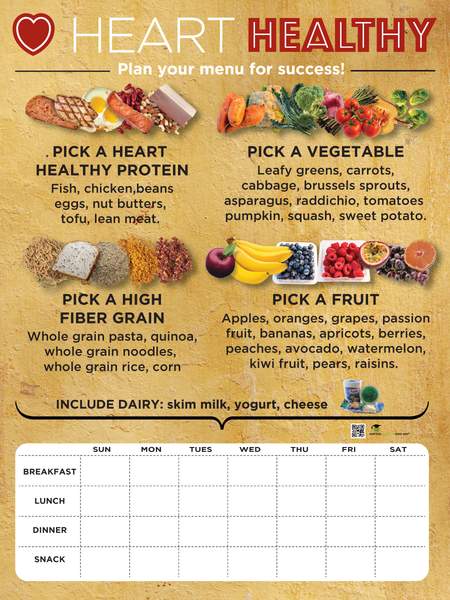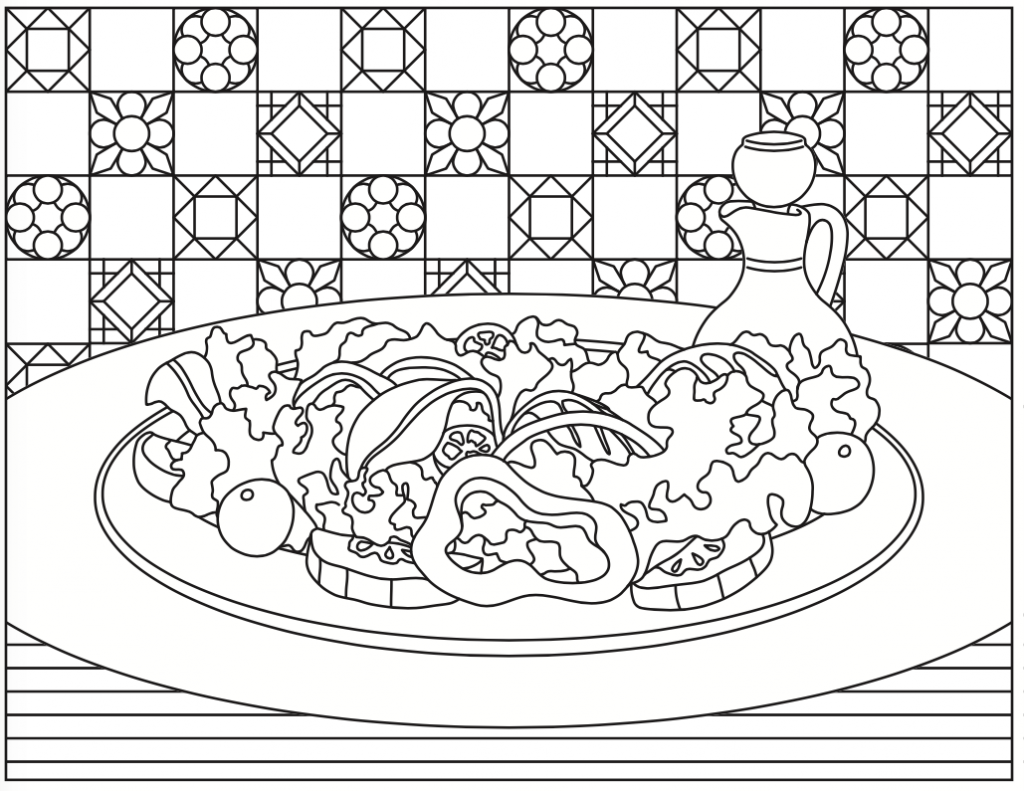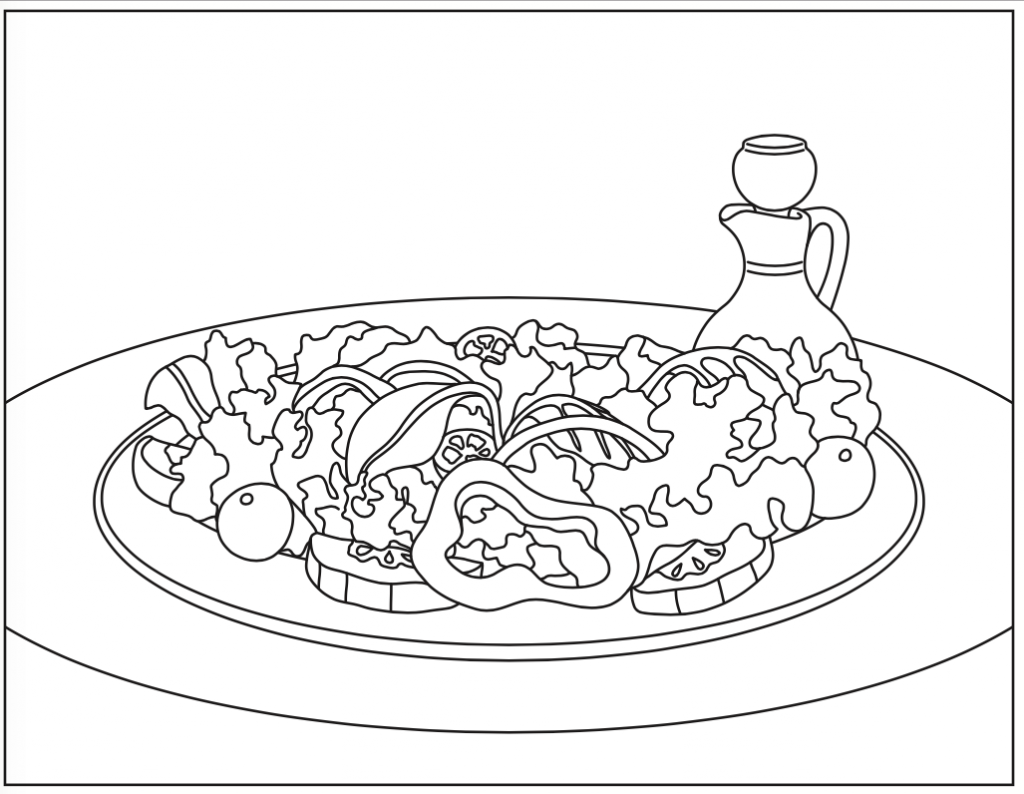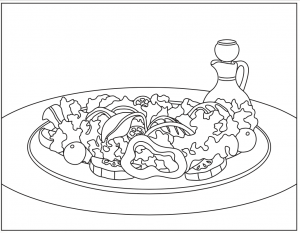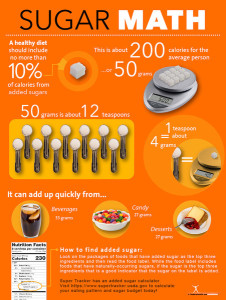 When the new Dietary Guidelines for Americans (DGA) released their recommendations about sugar intake, we thought they made a lot of sense. After all, the World Health Organization has been recommending a 10% calorie limit on added sugars for over a decade. The DGA committee now recognizes that sugar makes up about 30% of daily calories in our country, so changes are needed to cut down on sugary beverages, snacks, and desserts with added sugars. Treat foods and beverages are no longer treats but daily staples, which in turn is a significant cause of obesity when people are not getting enough physical activity and when high-sugar foods are replacing high-fiber foods that can help people feel more satiated.
When the new Dietary Guidelines for Americans (DGA) released their recommendations about sugar intake, we thought they made a lot of sense. After all, the World Health Organization has been recommending a 10% calorie limit on added sugars for over a decade. The DGA committee now recognizes that sugar makes up about 30% of daily calories in our country, so changes are needed to cut down on sugary beverages, snacks, and desserts with added sugars. Treat foods and beverages are no longer treats but daily staples, which in turn is a significant cause of obesity when people are not getting enough physical activity and when high-sugar foods are replacing high-fiber foods that can help people feel more satiated.
Yet if you tell people to keep their sugar intake to 10% of their daily calories, this advice doesn’t necessarily have much real-world meaning.
People would have to do a bit of math to figure out how much sugar that that recommendation is allowing for each day. To calculate it, they would first need to land on a daily calorie intake. A 2,000-calorie-per-day eating pattern is pretty typical, so in our example let’s use that as a base number. 10% of 2,000 calories is 200 calories each day. There’s the maximum in an easier format to apply to day-to-day life.
Of course, some people prefer to calculate their sugar needs in grams. To do that, divide the daily total calories from sugar by 4 (calories per gram). For a 2,000-calorie diet, the max is 50 grams.
Just for kicks, let’s set that out in teaspoons too. There are 4 grams of sugar in a teaspoon. That means that the daily cap is set at roughly 12 teaspoons of added sugars per day.
I hope those mathematical measurements can help your clients apply the DGA’s sugar recommendations to their daily lives. You can find all these measurements in the Sugar Math poster, which is what started this entire mathematical exercise.
Of course, the importance of sugar math isn’t the only thing we learned as we were putting the poster together. Here are the top 8 lessons that really made us think as we created that resource…
- One 12-ounce soda can have about 40 grams of sugar. That’s almost a full day’s supply of added sugar. Kid-sized sodas at most fast food places are 12 ounces — the same amount as that can of soda!
- Regular and large sodas at fast food places are usually equivalent to 2 or more cans of soda.
- Sweetened iced tea contains a surprising amount of sugar, roughly 22 grams per cup. Most bottles contain a couple cups or more, which in turn makes it easy to consume a day’s supply of sugar in one bottle of iced tea.
- Sweet treats are not only high in sugar but they are also high in calories. The average large cookie contains over 400 calories and a day’s supply of added sugars.
- Coffee drinks, tea, sodas, snacks, sweetened yogurt, and dessert can easily supply three days or more’s worth of sugar. It all adds up.
- A surprise to our team was that a can of soda is equivalent to a serving of candy!
- 50 grams can add up quickly, but if we could get to dinner without putting sweetened beverages in our day, then we had a little of our sugar budget left over for a half cup of frozen yogurt. In a typical day, I used the rest of my budget on a cereal bar and jam for a sandwich. Overall, the guideline helped us lower our calories, especially in beverage calories.
- It’s a great idea to track what you eat and drink in a day so you can make better choices.
And there you have it! 8 things we learned while putting together the Sugar Math poster. I’m really proud of this poster — it’s a great resource for nutrition and health educators because it lays out key lessons about added sugars in a fun and memorable way.

Want to share these lessons with your clients? From our collection of free printable nutrition education materials comes a new PDF handout all about added sugars!
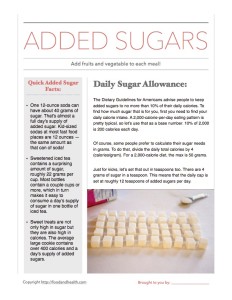
And here are some other fantastic sugar education resources, straight from the Nutrition Education Store!



